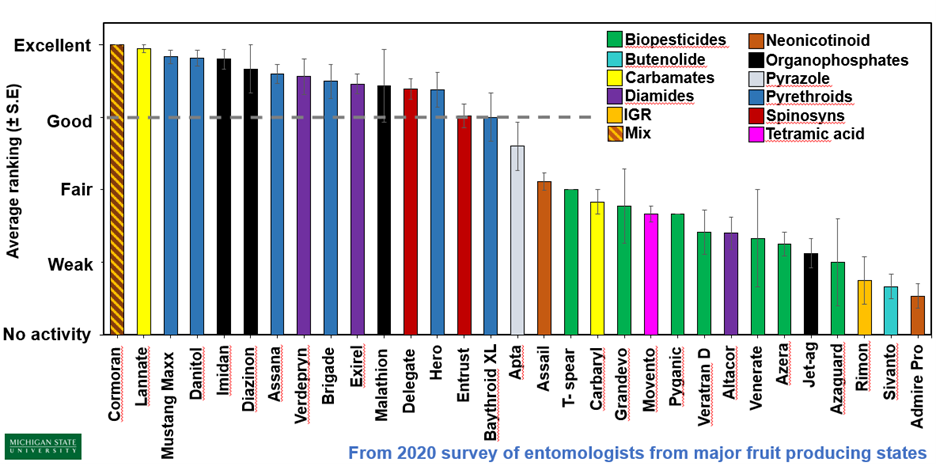Time for spotted wing Drosophila management in berry and cherry crops
With the cooler and wetter weather, conditions have become much more suitable for spotted wing Drosophila at a time when the density of susceptible fruit is increasing.

This growing season, the Michigan State University Extension fruit team has discontinued our coordinated weekly reports on spotted wing Drosophila (SWD) activity. This pest has been in the state for at least a decade now, and growers have adapted to its presence as one of the suite of insects to manage. Regional MSU Extension fruit reports will still include local information on SWD activity and can link to more detailed articles like this one. We still recommend monitoring your own farm to have the most local information.
In the past few weeks, SWD monitoring traps deployed and checked by MSU staff in each of the main fruit producing regions of the state have started to catch some SWD, though the number of traps with SWD and the number of flies per trap was relatively low. The first SWD caught in a trap occurred in the last few days of May this year in southwest Michigan, but the very hot and dry conditions kept their activity low and so many first detections were made into June. Now with the cooler and wetter weather, conditions have become much more suitable for this pest at a time when the density of susceptible fruit is increasing. Traps are now catching flies more commonly, and some sites are reporting some higher catches.
As the graph in Figure 1 clearly shows, compared to recent years, SWD activity has started a little later in 2021, but conditions are now good for the population to build during the next few weeks when temperatures will be more moderate and rainfall is more common. Ripening cherry and blueberry crops, and wild berry-producing plants along wooded edges, such as the invasive honeysuckle, are expected to become infested as the pest increases in abundance.
To provide a bit of historical context, we have been trapping the same five sites near Fennville, Michigan, since 2015 (Figure 1), and the catches indicate that the typical summer population surge has not yet begun. However, it is very possible we could see an abrupt increase in the number of flies in traps over the next couple of weeks as populations build on honeysuckle fruit and flies start moving to ripe fruit in commercial fields and orchards. During July as crops ripen, pay attention to the information coming from your monitoring traps for a general view of population pressure from SWD, and use available models and fruit ripeness status to determine infestation risk.
For tart cherries, there is a new online tool in MSU Enviroweather that predicts when the crop is expected to be at risk of infestation. In northwest Michigan, although few SWD flies are being caught in traps, in an unsprayed block of trees at the research station, a sugar test of ripe fruit revealed a couple small larvae this week. In berries, risk of SWD infestation starts when fruit begin ripening. A salt test of berries allows a grower or scout to check if the fruit remains uninfested or if there are some small larvae that can be controlled. In both cherry and berry crops, regular fruit sampling can be used to drive pest management decisions through the harvest season.
Decisions on what insecticides to use to protect fruit should be based on registration for the crop, efficacy, pre-harvest intervals, resistance management, cost, and suitability for current weather conditions. To integrate experiences gained across the United States, a group of entomologists and crop advisors were polled in 2019 to rank insecticides for their efficacy. Figure 2 shows the results of the rankings from excellent to weak. These make up most of the applications used for SWD control, but organic growers would be using a restricted set of these options.

For more information on SWD biology, identification, monitoring and management, MSU Extension has compiled all the relevant fact sheets and videos for SWD.



 Print
Print Email
Email
